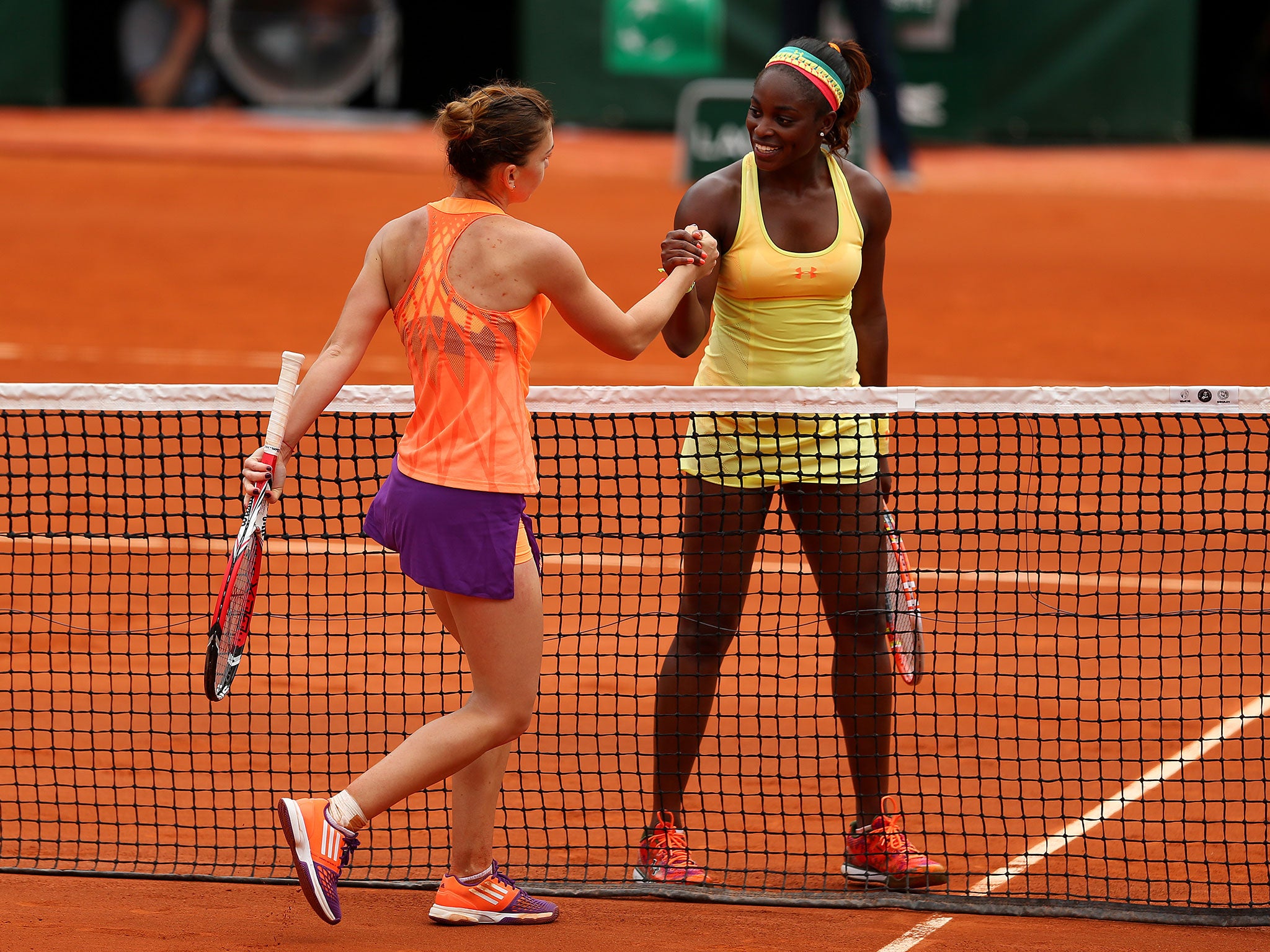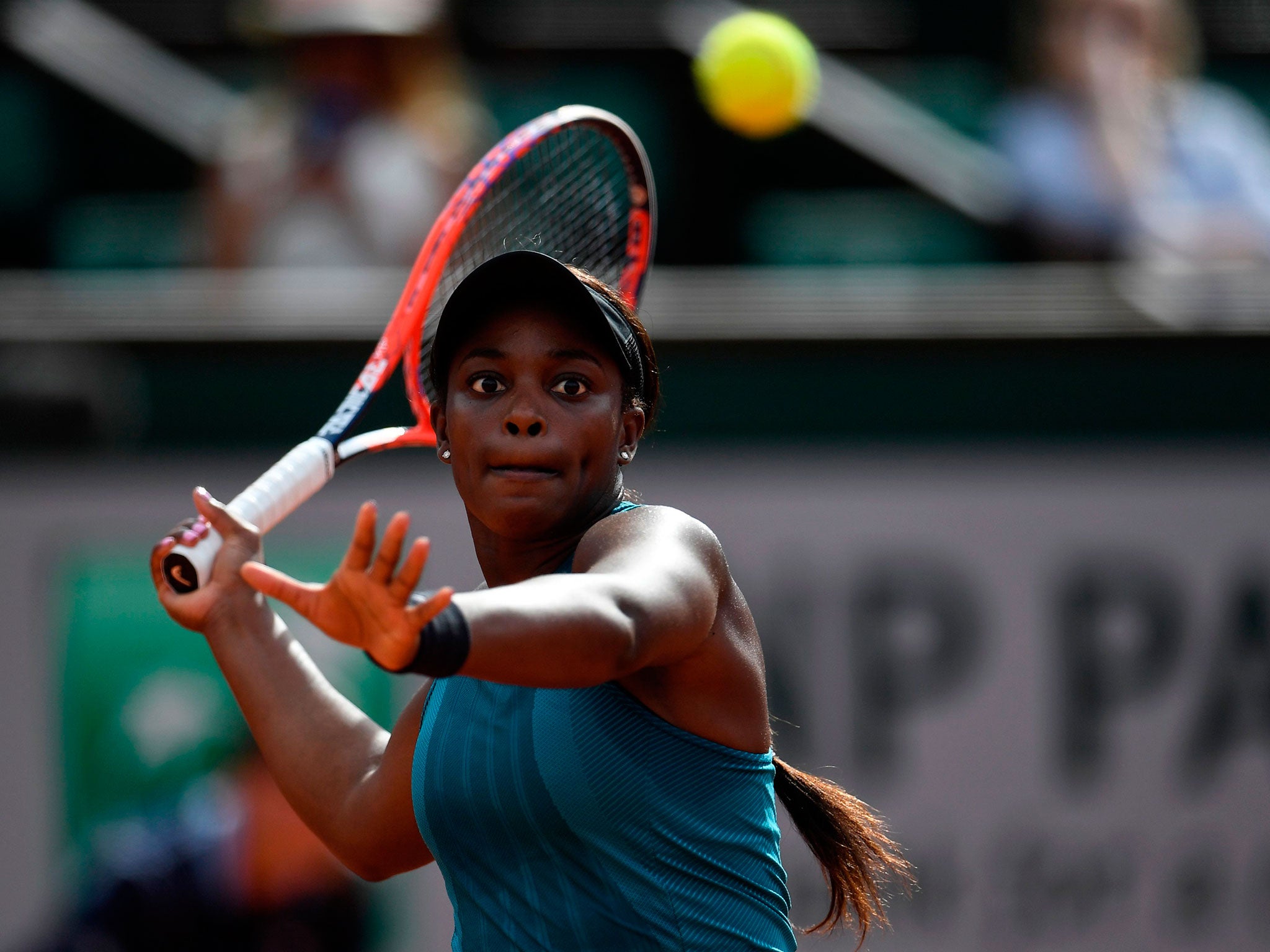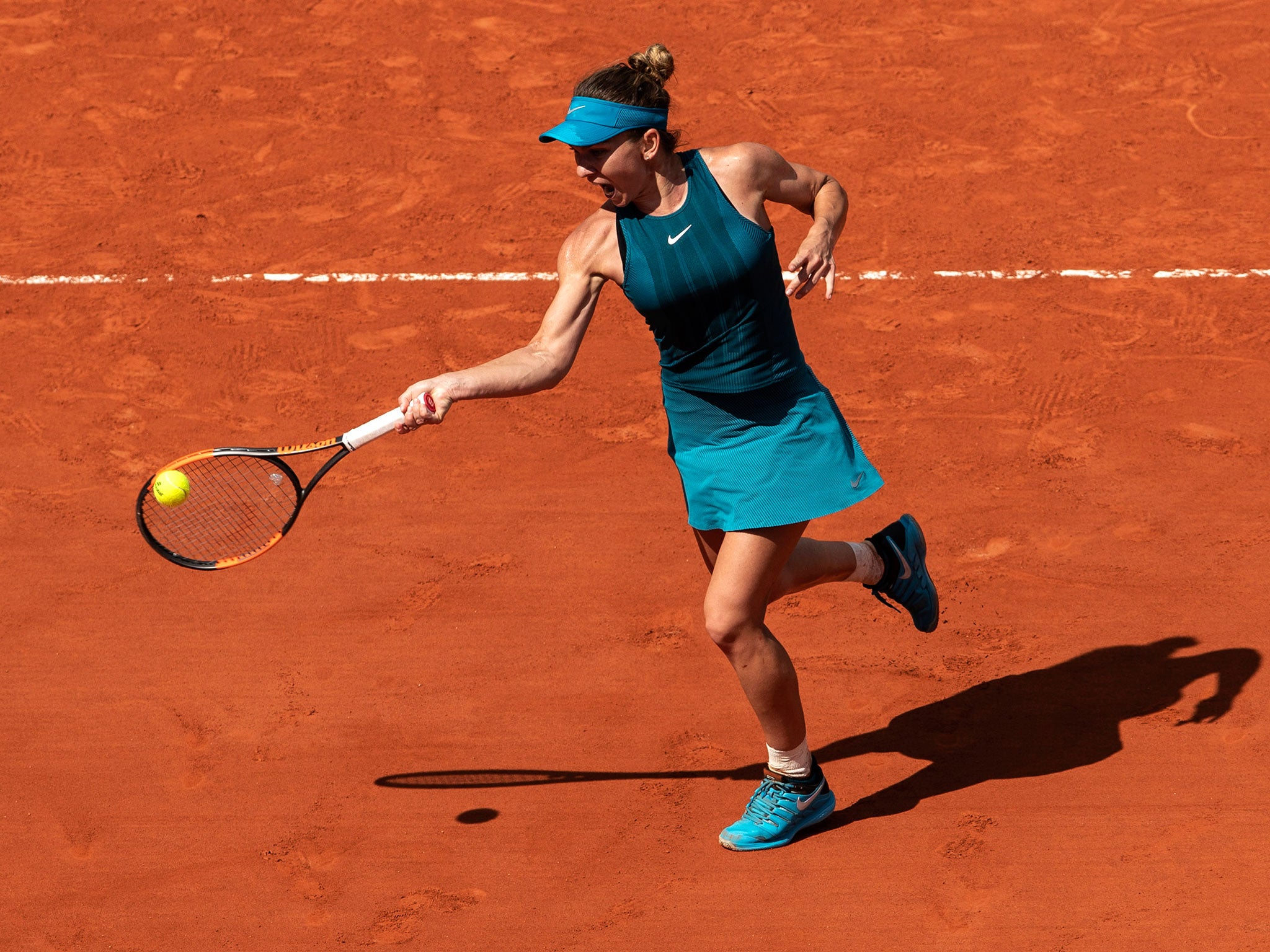French Open: Simona Halep must rise to big occasion to match Sloane Stephens' impressive record
The 2017 US Open was one of only six tour-level finals in which Stephens has played, but the world No 10 has won every one of them. Halep, in contrast, has lost 13 out of her 29 tour finals

Your support helps us to tell the story
From reproductive rights to climate change to Big Tech, The Independent is on the ground when the story is developing. Whether it's investigating the financials of Elon Musk's pro-Trump PAC or producing our latest documentary, 'The A Word', which shines a light on the American women fighting for reproductive rights, we know how important it is to parse out the facts from the messaging.
At such a critical moment in US history, we need reporters on the ground. Your donation allows us to keep sending journalists to speak to both sides of the story.
The Independent is trusted by Americans across the entire political spectrum. And unlike many other quality news outlets, we choose not to lock Americans out of our reporting and analysis with paywalls. We believe quality journalism should be available to everyone, paid for by those who can afford it.
Your support makes all the difference.There are many similarities between Simona Halep and Sloane Stephens, especially in the way they play the game, but last year’s US Open champion will be hoping that one of the key differences in their playing records will be significant when they meet here on Saturday in the final of the French Open.
The 2017 US Open was one of only six tour-level finals in which Stephens has played, but the world No 10 has won every one of them. Halep, in contrast, has played in 29 finals, but the 26-year-old Romanian, who is 18 months older than Stephens, has lost 13 of them.
Most significantly, Halep has lost in all three of her Grand Slam finals, to Maria Sharapova and Jelena Ostapenko here in 2014 and 2017 respectively and to Caroline Wozniacki at this year’s Australian Open.
“I’ve had good opportunities in finals and I’ve taken advantage of them,” Stephens said. “I’ve played well, played solid. There is no formula. I didn't, like, try to do it. I'm not trying to break a record. It's just how it's happened for me.
“I think once I get going in a tournament I'm pretty consistent, which is good. I just try to keep that going through the finals and just compete to the very last match.”
She added: “When you get to a final, obviously you have played well, but the person that you are playing against also played well. So I think I go in knowing it’s going to be a battle no matter what, no matter who I’m playing. Anything could happen.
“I guess you could be playing No 1 in the world or No 90 in the world. Really, it doesn't matter. It's just basically going out and competing, because the person you're playing against has done the exact same thing as you.”
Stephens’ reputation as a big-occasion player is demonstrated by her record over the last year. She had not competed for 11 months when she returned at Wimbledon last summer after foot surgery, but 10 weeks later she won her first Grand Slam title at Flushing Meadows when ranked No 83 in the world.

A subsequent run of eight successive defeats ended only in February, but two tournaments later Stephens won the Miami Open, where she beat Garbine Muguruza, Angelique Kerber, Victoria Azarenka and Jelena Ostapenko in her last four matches. In the Fed Cup semi-finals later that month Stephens’ two victories in singles were the key to the United States’ victory away to France.
“I was just starting my comeback,” Stephens said here when asked about her fluctuating results. “I had only played four or five tournaments. I was just getting back in the groove of things. I think life came at me fast after the US Open. I just needed to regroup and get myself together, which I did well, and I started playing better and better.
“Then obviously I had good results in Miami and Fed Cup. I have just slowly gained momentum. There is no formula. There's no right or wrong. It's just each person is individual and does it in their own time.”

Stephens does not believe that she will have a psychological advantage over Halep as the only one with a Grand Slam title to her name.
“She's won plenty of tournaments,” Stephens said. “She's No 1 in the world for a reason. I think we'll just have to go out and compete. Someone has to win. Someone has to lose. Just go out, give it your all, and whoever wins, wins.”
While Stephens has often had decent results on clay, this is the first year she has gone beyond the fourth round here. Halep has had appreciably more experience – and better results – than the American on the surface and also leads 5-2 in their head-to-head record.
The world No 1 has won their last four meetings, including their fourth-round encounter here four years ago and two matches on hard courts in the United States last summer.

“I know that she's a strong opponent,” Halep said. “I will play my game against her, as I did last year. It's clay. It's different. It's a different match, a different year.”
Stephens is only 5ft 7in tall and Halep just 5ft 6in. Both players lack the power of some of their rivals, but both are extremely quick across the court. Stephens is perhaps the better defender, but Halep tends to be more aggressive and packs a good punch for a player of her size.
Halep has insisted through this tournament that she has “no expectations, no pressure”. However, it was put to the popular Romanian that many fans around the world would be hoping she can win a Grand Slam title at last.
“OK, let's make a deal,” Halep said with a smile. “I will play for the fans from all over the world, because I know that many are hoping I can finally win a Grand Slam. I will put everything I have on the court on Saturday. I think that will make many people happy - and maybe I will have enough power to win.”
Join our commenting forum
Join thought-provoking conversations, follow other Independent readers and see their replies
Comments